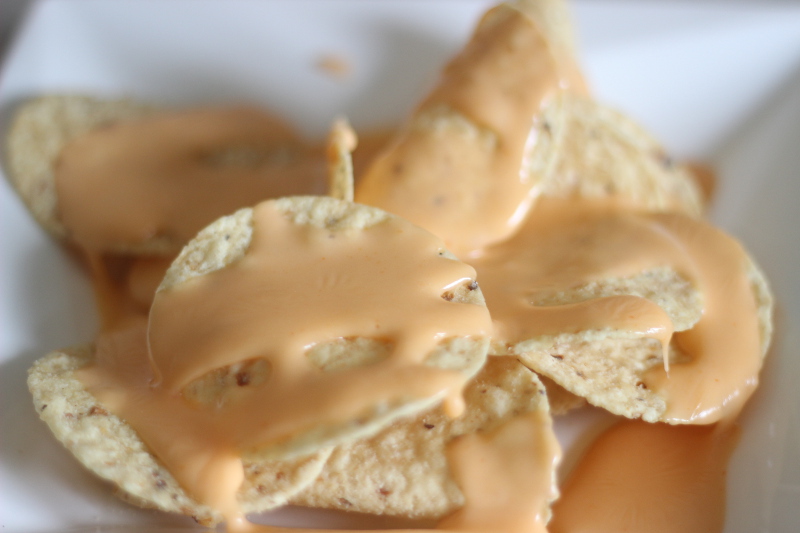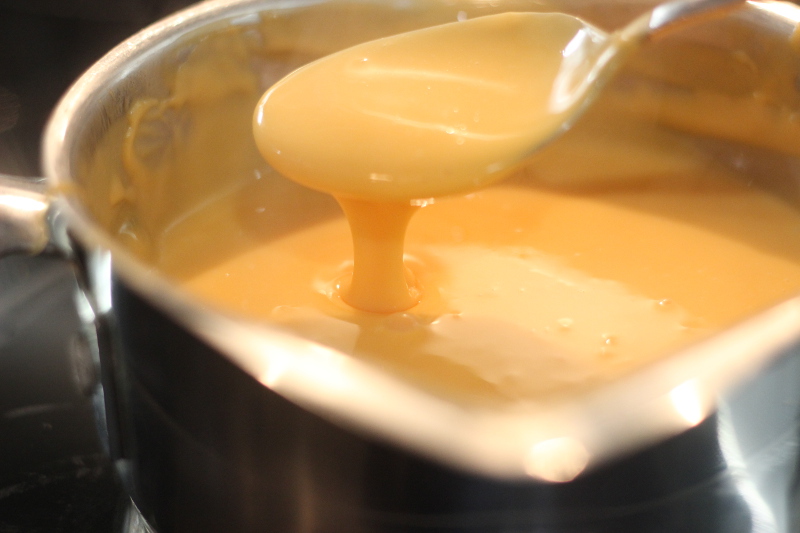Making Cheese Gel with Science!
Posted on 23 Nov 2014A significant part of cooking is chemical science, but few people think of it in this way, but when combining cooking with what people consider stereotypical chemistry –using & mixing things with long technical names– you can have more fun.
Cheese as a Condiment
A typical method of adding cheese to things is simply to place grated cheese over a pile of food and melting it (in an oven usually). Now one of the problems (as I see it) with this, is that when you heat cheese it tends to split apart into milk solids and liquid milk fat, so you end up with unnecessary grease.
In my mind, the cheese-as-a-condiment is one of that is more smooth & creamy, such as that of a fondue, but your average “out-of-the-package” cheese does not melt this way. You can purchase one of several (disgusting) cheese products that gives you this effect, but it’s more fun to make one yourself and you have the added benefit of knowing what goes into it.
Can be then used on nachos, for example:

Emulsification
One way to do this to use a chemical emulsifier to make the liquid fats –cheese– soluble in something that it is normally not soluble in –such as water. Essentially, something that’s done frequently in a factory setting to help make many processed cheese products, spreads, dips, etc.
Now there are a tonne of food-safe chemical emulsifiers each with slightly different properties that you could use, but the one that I have a stock of, and that works particularly well with milk fats, like those in cheese, is sodium citrate –the salt of citric acid– which you can get from your friendly online distributor of science-y cooking products.
Many of these are also flavourless, or given the usually relatively small amount in food, the flavour that might be imparted is insignificant. They’re essentially used for textural changes.
Ingredients
| Amount | Ingredient | Notes |
|---|---|---|
| 250 mL | water | If you’re feeling more experimentative, you can use a different (water-based) liquid for additional flavour, such as wine or an infusion. |
| 10 grams | sodium citrate | — |
| 3-4 cups | cheese, grated | Such as cheddar, or whichever you fancy |
Directions
- In a pot make a solution of 0.25g/mL sodium citrate in water –boil the water and dissolve the salt.
- Reduce the heat and begin to melt the cheese into the water handful at a time while whisking constantly.
- When all the cheese has melted keep stirring while the mixture thickens.
- Serve or use hot –keep it warm.
At the end of this what you’ll essentially have is a “cheese gel” which will stiffen as it cools, but it can easily be reheated to regain its smooth consistency.
When you’ve completed the emulusion you can add other ingredients to jazz it up a bit –some dried spices or chopped jalapenos, for example– before pouring it over things or using it as a dip. Do note, if you’re pouring it over nachos, it’s best to have heated the chips first.

Another great use for your cheese gel is to pour it out, while hot, onto a baking sheet and let cool. Then you can cut it into squares for that perfect melt needed for the perfect cheeseburger.